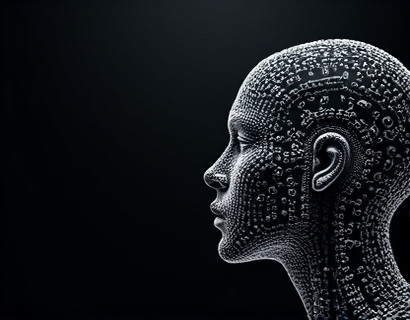Transforming Space Exploration Education with AI-Powered Chat Interfaces
In the realm of educational tools, the integration of AI-powered chat interfaces has opened new avenues for learning, particularly in specialized fields such as space exploration and astronomy. These advanced platforms offer a unique opportunity for educational institutions and families to access expert-level insights in a secure and engaging manner. This article delves into the capabilities and benefits of such AI chat platforms, focusing on their application in providing specialized knowledge about space exploration, with a particular emphasis on creating a child-friendly version for safe and enriching learning experiences for young learners.
Specialized Insights for Educational Institutions
The AI chat interface designed for educational institutions serves as a sophisticated resource for teachers and students alike. By leveraging artificial intelligence, these platforms can deliver content that is not only accurate but also tailored to the educational level of the users. For instance, a high school student studying astronomy can engage in a conversation that provides detailed explanations of celestial bodies, space missions, and the latest discoveries, all while ensuring the information is presented in an understandable format.
One of the key advantages of using an AI chat platform in an educational setting is its ability to provide real-time, personalized responses to queries. This interactivity can significantly enhance the learning experience, making complex topics more accessible and engaging. Teachers can integrate these chat interfaces into their curricula, using them as supplementary tools to reinforce classroom teachings and encourage independent learning.
Industry Expertise at Your Fingertips
For those interested in the space industry beyond academic curricula, AI chat interfaces offer a direct line to industry experts and current events. These platforms can be programmed to provide updates on space missions, technological advancements, and research findings. Users can ask specific questions about spacecraft design, planetary science, or the history of space exploration, and receive detailed, well-researched answers.
The content provided by these chat interfaces is meticulously verified for accuracy, ensuring that users, whether students or enthusiasts, receive reliable information. This verification process involves cross-referencing data from reputable sources, including scientific journals, official space agency releases, and peer-reviewed articles. By doing so, the platform maintains a high standard of educational integrity.
Enhancing Learning for Young Minds
Recognizing the importance of early education in sparking interest in STEM fields, a child-friendly version of the AI chat interface has been developed. This version is designed to be safe, intuitive, and educational for young learners. The language used is simplified, and the content is structured to cater to various age groups, from elementary to pre-teens.
The child-friendly chat interface can guide young users through interactive lessons on topics such as the solar system, stars, planets, and the history of space exploration. It can also include fun facts, quizzes, and games to make learning enjoyable. For example, a child might ask, "What is a black hole?" and receive a response that includes a simple explanation, accompanied by visual aids and links to further reading materials suitable for their age group.
Safety is a paramount concern in creating content for children. The chat interface is designed with strict content filters to ensure that all responses are appropriate and free from any harmful or complex information. Additionally, the platform can be configured to limit the depth of responses based on the user's age, ensuring that the content remains age-appropriate and engaging without overwhelming the young learner.
Secure and Educational Experience
The security of the AI chat platform is a top priority, especially when it comes to educational institutions and families. The platform employs advanced security measures to protect user data and ensure a safe online environment. This includes encryption for data transmission, secure login protocols, and regular security audits to identify and mitigate potential vulnerabilities.
For educational institutions, the platform can be integrated into their existing systems with robust authentication methods, such as single sign-on (SSO) and role-based access control. This ensures that only authorized users can access the chat interface, and that their activities are monitored to maintain a secure and controlled learning environment.
Families using the platform at home can also benefit from these security features. Parents can set up user profiles with specific access levels, ensuring that children can explore space-related topics without encountering inappropriate content. The platform can also provide reports on usage and learning progress, giving parents insights into their child's educational activities.
Interactive and Engaging Learning
One of the most compelling aspects of the AI chat interface is its ability to create an interactive and engaging learning experience. Through natural language processing, the chat interface can understand and respond to a wide range of queries, making the learning process feel more like a conversation than a traditional Q&A session.
For example, a student might ask, "What would it be like to live on Mars?" The chat interface can simulate a scenario, discussing the challenges of Martian living conditions, current research into habitat design, and the scientific experiments being conducted to prepare for future human missions. This type of interactive dialogue not only educates but also sparks curiosity and imagination.
Moreover, the chat interface can incorporate multimedia elements such as images, videos, and interactive simulations to enhance the learning experience. For instance, when discussing the Hubble Space Telescope, the chat can provide high-resolution images of galaxies and nebulae, along with explanations of the scientific significance of these observations.
Collaboration and Community Building
The AI chat platform can also serve as a hub for collaboration and community building among students, teachers, and space enthusiasts. Users can join discussion forums, participate in live Q&A sessions with experts, and share their own projects and discoveries. This community aspect fosters a sense of belonging and encourages collaborative learning.
For educational institutions, the platform can facilitate group projects and class discussions, allowing students to work together on space-related topics. Teachers can monitor these interactions, providing guidance and feedback as needed. This collaborative environment not only enhances learning but also develops important skills such as communication, critical thinking, and teamwork.
Continuous Improvement and Adaptation
The AI chat interface is designed to continuously learn and adapt based on user interactions. Machine learning algorithms analyze user queries and feedback to refine the content and improve the accuracy of responses over time. This ensures that the platform remains up-to-date with the latest developments in space exploration and astronomy.
Educational institutions and families can provide input on the platform's performance, suggesting areas for improvement or new topics to cover. This feedback loop helps the platform evolve to better meet the needs of its users, ensuring that it remains a valuable resource for years to come.
Conclusion
The integration of AI-powered chat interfaces in space exploration education represents a significant advancement in the way we approach learning. By providing specialized insights, ensuring content accuracy, and offering a child-friendly version, these platforms make complex topics accessible and engaging for all users. Whether in a classroom setting or at home, the AI chat interface serves as a powerful tool for enhancing educational experiences and fostering a deeper understanding of the universe.










































